SD F-1 Grand Prix (SD F-1グランプリ)
SNES - Vision System, 1995
In 1992 Super Mario Kart powerslid onto the scene, inventing what we now know as the kart racing genre geared around fun and combat in karts rather than the more straight-laced racing games. It inspired many subsequent games, but only a few on the SNES before the end of its lifespan in 1998.
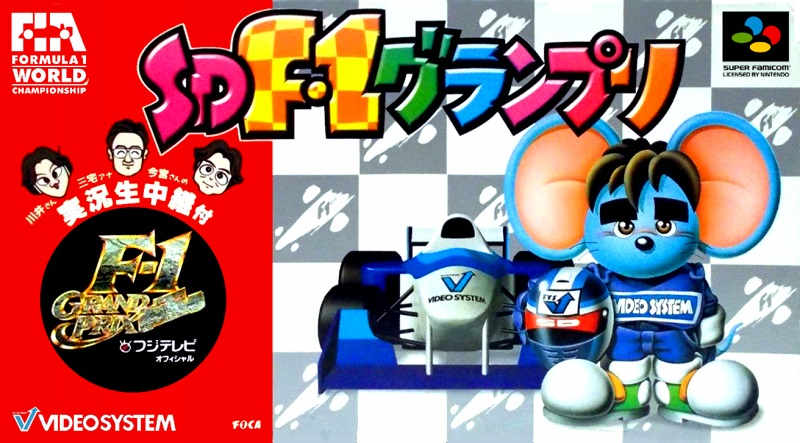
Video System was a Japanese developer with various franchises in its stable such as the Aero Fighters vertical scrolling shmups, and a decent volleyball series. They also ported the arcade version of Pipe Dream originally published by Lucasfilm Games (later LucasArts), but their most recognisable games were the F-1 Grand Prix series for arcade and SNES. (1998) With the official Formula 1 licence from FOCA (licensing is now granted by FIA instead) and experience developing on the SNES, what better fit in 1995 than an F1 kart racer.
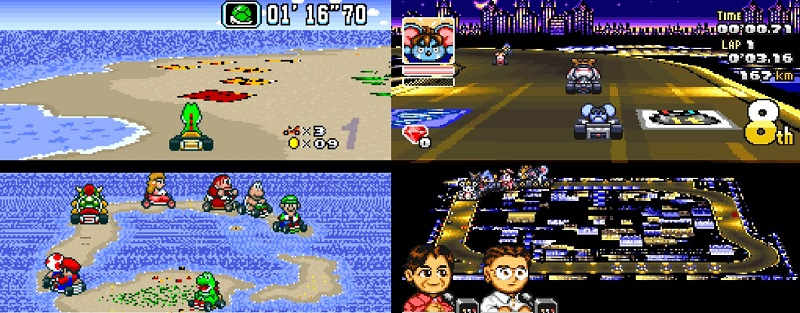
At first glance this Japan exclusive is very Mario Kart, especially in the ‘Crash Race’ mode, in which you race around fantastical locations battling the other drivers with power ups. The main mode here though is ‘World GP’,a full season of 16 real-life F1 race tracks. You are equipped with a turbo boost which turns you briefly into a flying rocket car if you collect enough boost pickups, but there are no other power ups available to you. No power sliding here, in fact sliding round a corner at all will lose you time. You will even (gasp!) need to brake for corners if you want to beat the other drivers.
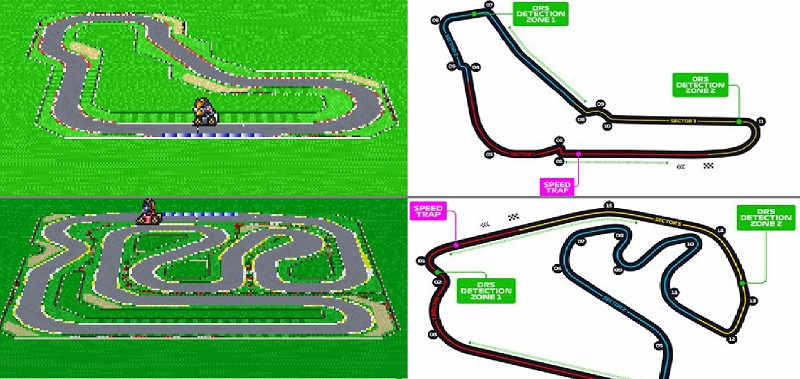
And those drivers are where we need to explain what the ‘SD’ of the title means. It stands for ‘Super Deformed’, meaning the cute big-head art style, also known as ‘chibi’. F1 fans of a certain age will soon realise the cartoon animals are not just characters, but each based on real life drivers from the 1994 season. Michael Schumacher is Wolf Shubarat, local hero Ukyo Katayama is cute mouse Chuu Kamikaze, while Jean Alesi is prancing black horse Jean Giannip in a tiny cute Ferrari. Each driver has a rating for top speed, acceleration, weight (resistance to being bashed by other drivers) and grip (to avoid sliding round corners). They feel at least as different as the weight classes of Mario Kart.
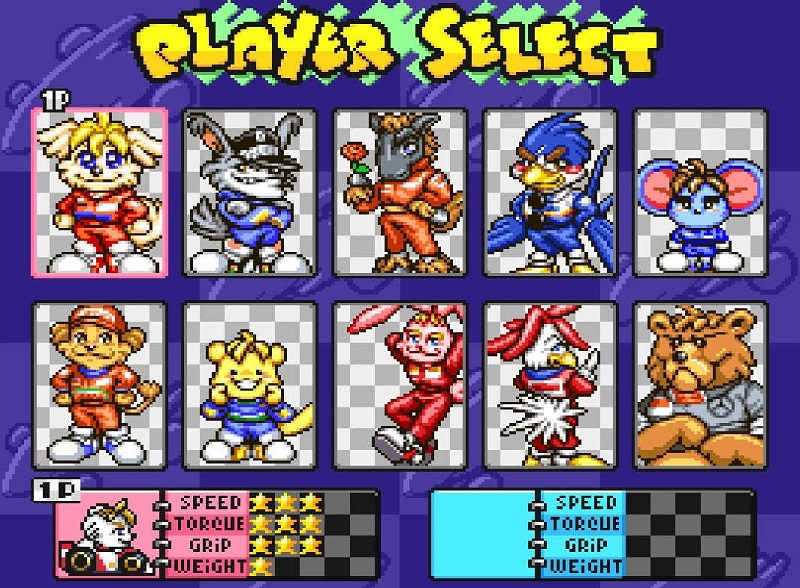
And it’s not just the drivers who get the cute treatment. With another official licence, this time from broadcaster Fuji TV, SD F-1 GP also features the commentary of 90s F1 announcers Jun Imamiya and Masaharu Miyake and even the beloved Kaz Kawai popping up to do pit reporting, all in their little chibi forms. It does get repetitive but I enjoyed it, and it was normal for the time, don’t forget all those repetitive barks from your childhood games that still hang around in your brain today. The music is fine as well, but let’s not pretend anything can beat the Mario Kart music.
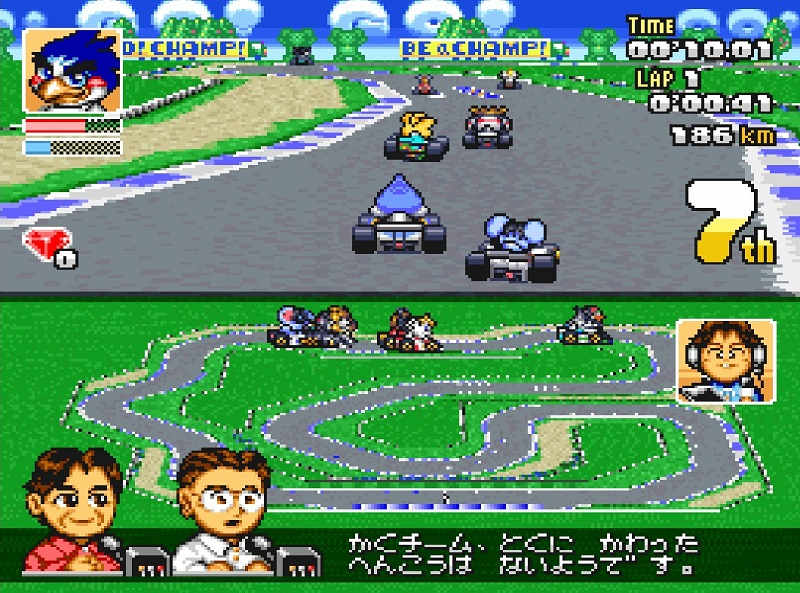
While other SNES kart racers such as Street Racer (1994) have more of a focus on fighting, the actual driving is more involved with SD F-1 GP in a similar way to Mario Kart but leaning towards racing rather than drifting. The driving in World GP mode is nuanced for a kart game, lifting off the accelerator slightly is often better than braking, and brake and gas at the same time will cause you to slide and lose time. You also need to ride the kerbs just the right amount, it feels like you’re racing.
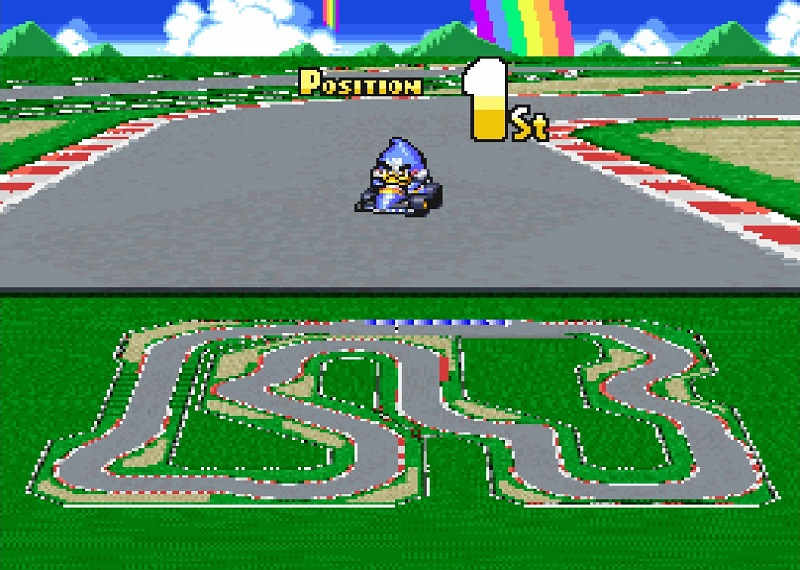
You also have the choice to go off your line and collect boost pickups if you want to use your turbo. There’s a finite number of these so you will have to really seek them out if you want more than one turbo in a race, a great risk/reward mechanic. Using the turbo also needs to be done strategically, allowing you to cut over grass and gravel but not walls. In Monaco you probably won’t want to use it at all, you’ll be having a hard enough time making it round the lap. Unlike in Mario Kart, collisions will cause you damage and you’ll need to pull into the pits on the main straight to repair your car, an unashamed copy of F-Zero’s system.
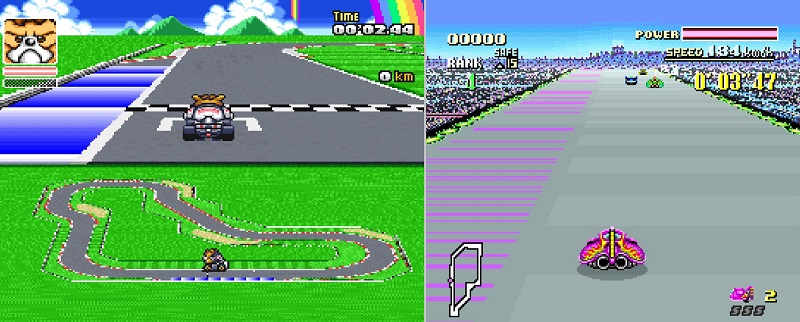
A lot more effort has been put into SD F-1 GP than most kart racers, a genre often filled with licensed shovelware. Crash Race is almost a separate game and there’s more to it than just a Mario Kart clone. Each race earns you money which you can use to upgrade your engine, chassis or tyres throughout the competition. There are additional two-player modes as well. Dog Fight is just that, you fly around with constant boost trying to shoot each other out of the air. The Vs mode has a ‘relay’ version where you choose four drivers and do one lap with each.

Vision System knew how to make a good F1 game. The F-1 Grand Prix series focused on the serious side of racing, but the overhead view meant that they are completely impossible to have fun with. Until F-Zero, consoles essentially had to choose between top down or a behind-the-car view with the player only moving left or right on the screen, with the fake racetrack flowing past in unconvincing left or right curves. In their F1 sims, although you’re given signals about the next turn like a rally game, your view in front of the car is so small that you need the reactions of a real F1 driver to actually make any of the turns properly.
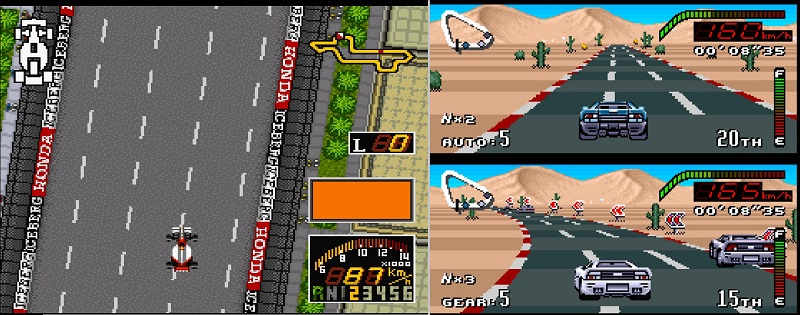
Ironically, despite being the novelty cousin of those F1 games, the Mario Kart camera perspective with faux 3D Mode 7 graphics of SD F-1 GP makes it far superior to their main F1 series. One of the reasons Mario Kart exists is because Nintendo wanted to make a multiplayer version of F-Zero, but with multiple players on one screen the SNES wasn’t powerful enough to process the game at high speeds, hence the change to slower go-karts.

The sad part is that in SD F-1 GP, you can change to an overhead view with various levels of zoom, and even these are much easier to play than their main F1 games. Perhaps meeting somewhere in the middle of the kart racer and sim, Vision System could have created something better than either. Certainly they hit their stride in 3D, going on to make the acclaimed F-1 World Grand Prix (1998) to which I lost hundreds of hours in front of the tv, N64 controller in hand.
Regardless, I really love this game and I highly recommend it if you’re a fan of its inspirations. Although nothing can beat Mario Kart, for me this ranks above F-Zero when I want some 16-bit racing, even just settling in and trying to beat my best laps on Time Trial.
I wish I had found out about this game sooner, and I loved this game so much I painstakingly captured gifs of all the racers. My super-deformed gift to you!

(Andrea de Cesaris) |

(Rubens Barrichello) |

(Ukyo Katayama) |

(Damon Hill) |

(Eddie Irvine) |

(Gerhard Berger) |

(Jean Alesi) |

(JJ Lehto) |

(Mika Hakkinen) |

(Michael Schumacher) |
All game posts:
© P7uen 2023 | Base style css by EGGRAMEN 2020